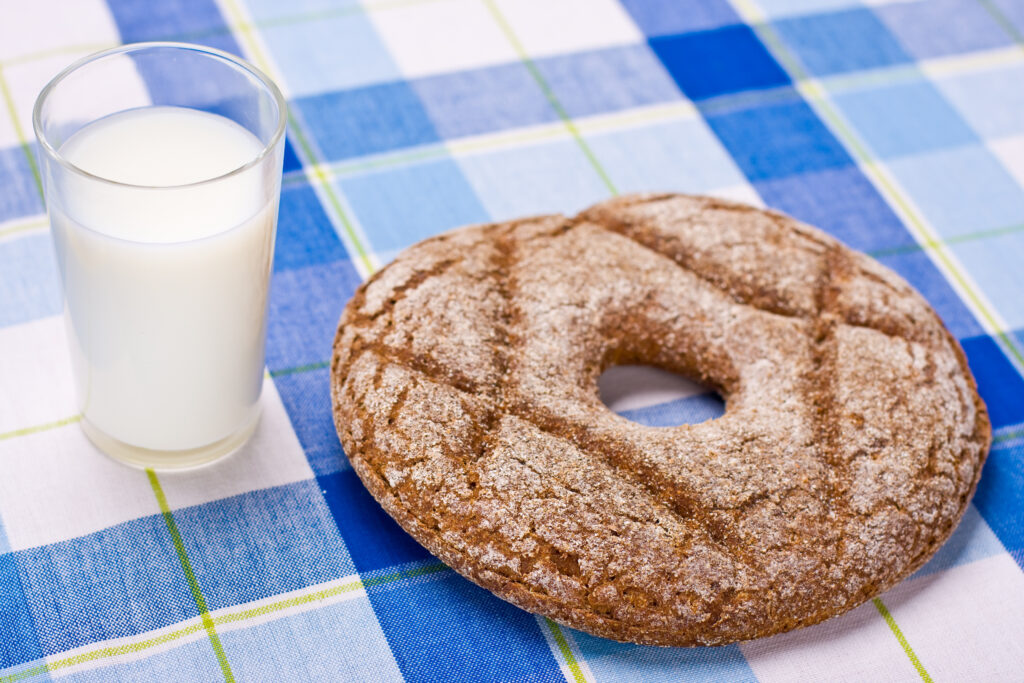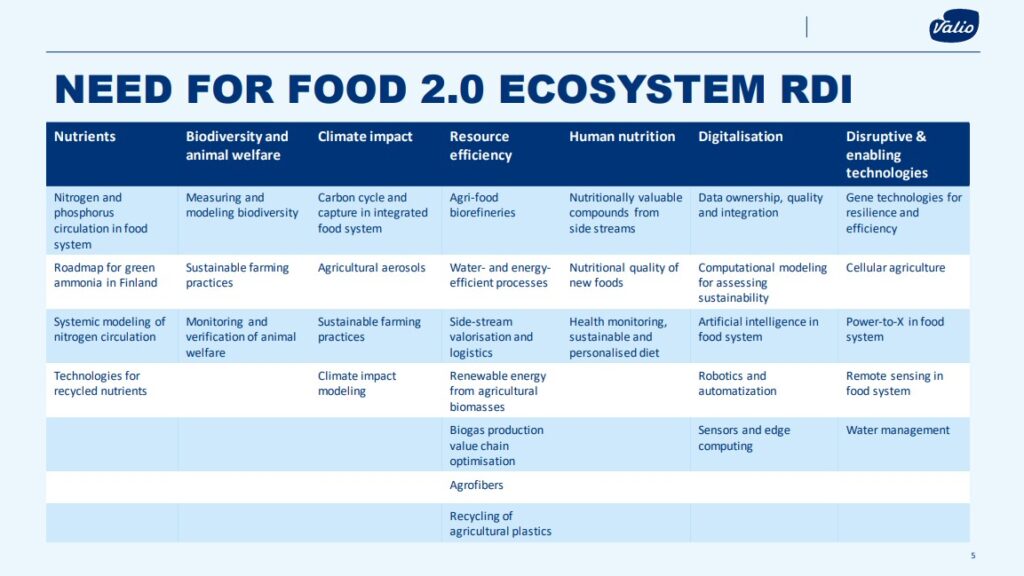By: Iida Alasentie and Silvia Gaiani, University of Helsinki Ruralia Institute
The climate conditions in Finland and other Nordic countries are known to be challenging due to the change of seasons and short-lasting summers. When the growing season of different crops is somewhere between 125 and 180 days, it influences the structure of Finnish farming. Historically, milk and beef production has formed an important part of the Finnish agricultural sector, comprising 50% of the agricultural gross return (Puupponen et al., 2022; Virkajärvi et al., 2015).
Nowadays, dairy farming is one of the most economically important types of farming in Finland. The value of agricultural production in Finland is strongly in animal husbandry, in which dairy farms play a central role. Finnish beef production is also primarily based on dairy animals (Ministry of Agriculture and Forestry of Finland, 2024). Even though dairy production plays an important role in the Finnish agriculture, the number of dairy farms has decreased nearly 50% from around 9,800 dairy farms in 2012 to roughly 4,900 dairy farms in 2022 (Statista, 2024a). At the same time, farms have become significantly bigger, and the herd size has almost doubled in the past decade (Natural Resources Institute Finland, 2021).

Regarding the consumption of drinkable milk, the amount has slowly decreased in Finland. During the past ten years (2012-2022), the annual consumption of milk per capita dropped from 134 kg to 92 kg (Statista, 2024b). While the consumption of drinkable milk has changed, dairy companies have also been strategically focusing more on the development of products that have better added value compared to bulk products like milk. These are products like different cheeses, ice creams and dairy-based flavored drinks. The consumption of these further processed products has stayed the same or even decreased in Finland during the past 10 years. Due to the changing consumer market, Finnish dairy producers have actively started to develop their market strategies and focus more on sustainability and profitability issues.
Food sector-related sustainability challenges have also been recognized in the Finnish R&D funding system. At the beginning of 2024, Valio, Finland’s biggest dairy cooperative, received a EUR 10 million funding from the government-owned public organization Business Finland to start its new RDI funding project called Food 2.0. The funding is directed to a 5-year research and development project with an ambitious aim to create a food system where growth and added value are built on the basis of sustainable production (Valio, 2024b).

The project’s objectives are manifold. Firstly, it aims to develop and provide tools to transition towards a more sustainable food system through product development, technological transformation, regenerative production, circular economy, and resource efficiency. Secondly, the goal is to have at least one hundred partners in the network, and with the new cooperation network, the aim is to achieve a total of €100m additional investment in research and development activities in Finland over the five years and gain new export market linked to the project funded network (Just Food, 2024).
The need for multi-stakeholder collaboration was also recognized in the framework of the ERA-NET-sponsored Climate-smart Dairy project, where Finnish experts interviewed recognized the impactful role that the big dairy companies have in the transition toward climate-smart solutions. The data collection was performed in Finland during the spring and summer of 2023 before Valio announced its Food 2.0 project.
The SmartDairy project’s Finnish Stakeholder data collection was carried out through a workshop and follow-up in-depth interviews. In total, 14 Finnish food sector experts took part in the workshop where, under the guidance of Helsinki University Ruralia Institute, different climate-smart dairy system-related challenges and opportunities were jointly explored. After the workshop, 10 experts participated in an in-depth data collection phase (4 interviews and 6 open survey answers) the aim of which was to detect power relationships among the Finnish dairy and alternative products systems and to identify the needs of dairy system actors in terms of sustainability.
During the data collection, experts underlined that the climate-smartness of the dairy sector is affected by how well different stakeholders and institutions can collaborate and develop new innovative solutions that are built on scientifically proven data. Valio’s Food 2.0 RDI project will, therefore, represent an opportunity to show in practice how the new Food 2.0 network will find ways to transition towards more diverse climate-smart solutions.
The blog text is based on the Climate-Smart Dairy Report “Developing opportunities and discussing new dairy products in Finland: Finnish Stakeholder data collection” (2024) produced by University of Helsinki Ruralia Institute. The report will be published later in 2024 on the Climate-Smart Dairy project page.
References:
Business Finland. 2024. New leading Companies: Kempower, Patria, Valio and Wärtsilä. Accessed 22.5.2024. Available at: https://www.businessfinland.fi/en/whats-new/news/cision-releases/2024/new-leading-companies-kempower-patria-valio-and-wartsila
Just Food. 2024. Valio receives funding for five-year R&D project. Accessed 30.5.2024. Available at: https://www.just-food.com/news/valio-receives-funding-for-five-year-rd-project/
Natural Resources Institute Finland. Statistics Database; Natural Resources Institute Finland: Helsinki, Finland, 2021.
Ministry of Agriculture and Forestry of Finland. 2024. About Finland – Information on agriculture. Accessed 31.05.2024. Available at: https://mmm.fi/en/eu2019fi/about-finland
Puupponen, A., Lonkila, A., Savikurki, A., Karttunen, K., Huttunen, S., & Ott, A. 2022. Finnish dairy farmers’ perceptions of justice in the transition to carbon-neutral farming. Journal of Rural Studies, 90, 104-112.
Statista, 2024a. Number of dairy farms in Finland 2012-2022. Accessed 29.5.2024. Available at: https://www.statista.com/statistics/898161/number-dairy-farms-finland/
Statista. 2024b. Per capita consumption of milk in Finland from 2012 to 2022. Accessed 29.5.2024. Available at: https://www.statista.com/statistics/460031/per-capita-consumption-of-milk-in-finland/
Statistics Finland, 2022. Accessed 29.5.2024. Available at: https://www.statista.com/statistics/898166/dairy-farms-finland-by-region/
Valio. 2024a. We are Valio. Accessed 30.5.2024. Available at: https://www.valio.com/we-are-valio/farmer-owned/
Valio. 2024b. Artikkelit – Food 2.0. in English [Tulevaisuuden ruokajärjestelmä]. Accessed 22.5.2024. Available at https://www.valio.fi/artikkelit/tulevaisuuden-ruokajarjestelma/#food-2.0-in-english
Virkajärvi, P., Järvenranta, K., 2018. Nautakarjatuotannon ymparistövaikutusten arviointi ja sen kehittämistarpeet. Nro 35 (2018). https://doi.org/10.33354/ smst.73231. Maataloustieteen päivät 2018.
Leave a Reply